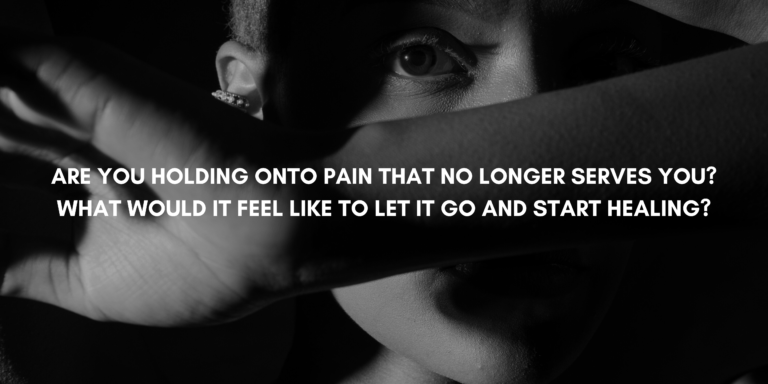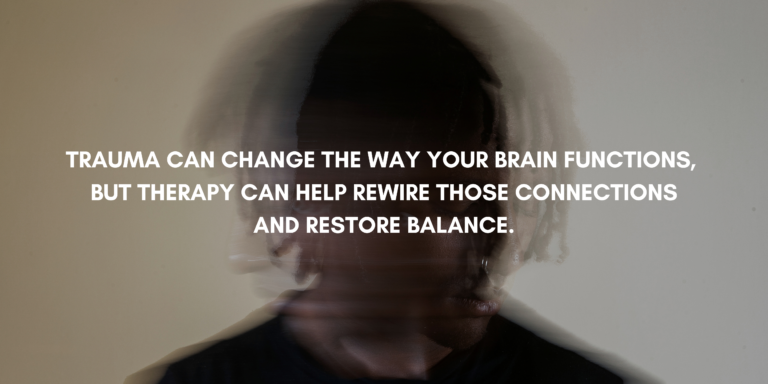A Guide to Trauma Therapy
Unlocking your inner resilience: a comprehensive overview of trauma therapy

Photo by Savannah B. on Unsplash
This article explores different types of trauma therapy, including CBT, EMDR, Somatic Experiencing, Mindfulness-Based Therapies, and Family Constellation Therapy. Learn how each approach can help you heal from past experiences and find the right path to reclaim your life.
Table of Contents
So, You’re Thinking About Trauma Therapy?
First things first: What even is trauma therapy, and why should you care? Well, if you’ve ever felt haunted by past experiences, found yourself overreacting to seemingly trivial things, or been stuck in a loop of anxiety or sadness that you can’t quite shake, trauma might be at the root. And guess what? You’re not alone. Trauma is a sneaky little devil that creeps into our lives in ways we often don’t recognize until we’re knee-deep in emotional quicksand.
But here’s the good news: Trauma therapy exists to help you wade through that muck and come out on the other side, not just surviving but thriving. Ready to dive in? Let’s break down everything you need to know.
What Exactly Is Trauma?
Before we get into the nitty-gritty of therapy, let’s talk about trauma itself. It’s more than just a bad day or a rough patch. Trauma can be any experience that overwhelms your ability to cope, leaving you feeling powerless, hopeless, or emotionally shattered. It’s like your brain and body get stuck in a constant state of “fight, flight, or freeze.”
The Big Three: Types of Trauma
- Acute Trauma: A single, overwhelming event (think car accident or sudden loss).
- Chronic Trauma: Repeated or prolonged exposure to highly stressful events (like ongoing abuse or neglect).
- Complex Trauma: Exposure to multiple traumatic events, often of an invasive, interpersonal nature (hello, childhood trauma).
Do any of these sound familiar? If so, trauma therapy might be your golden ticket to freedom.
But… Is Therapy Really for Me?
The million-dollar question: Do you need trauma therapy? It’s a deeply personal decision, but here are some signs that your past might be hanging around like an unwelcome house guest:
- Flashbacks or nightmares that make you feel like you’re reliving the experience.
- Emotional numbness or feeling disconnected from yourself or others.
- Hypervigilance (constantly being on edge or expecting the worst).
- Avoidance behaviors (steering clear of anything that reminds you of the trauma).
If any of these sound like you, keep reading. There’s hope on the horizon.
How Does Trauma Therapy Work, Anyway?
Trauma therapy isn’t one-size-fits-all. It’s like shopping for jeans—what works perfectly for one person might be all wrong for another. Here’s a rundown of the most common types of trauma therapy and how they work.

Cognitive Behavioral Therapy (CBT): Rewriting Your Mental Script
Imagine your mind as a bustling city filled with traffic. Each thought is like a car zipping around, some sticking to their lanes while others weave recklessly, causing chaos and confusion. If trauma is like a massive traffic jam in your brain, Cognitive Behavioral Therapy (CBT) is the traffic cop who steps in to restore order, helping you rewrite the mental script that’s keeping you stuck in distress.
What is CBT and How Does It Work?
Cognitive Behavioral Therapy (CBT) is one of the most widely researched and effective forms of therapy for treating trauma. Developed in the 1960s by Aaron Beck, CBT is based on the idea that our thoughts, feelings, and behaviors are interconnected. Negative thought patterns (think: “I’m not good enough” or “The world is unsafe”) can lead to feelings of anxiety, depression, or anger, which in turn influence our behaviors (like avoiding social situations or engaging in self-destructive habits).
CBT works by identifying these unhelpful thoughts and systematically challenging them. Through a structured process, CBT helps you recognize the cognitive distortions that keep you stuck and teaches you how to replace them with healthier, more balanced thoughts.
Here’s How a Typical CBT Session Might Go:
Identify the Problematic Thoughts: In the first step, you work with your therapist to pinpoint specific negative thoughts that are triggering distress. This could be a belief like, “I am to blame for what happened,” or “I can never trust anyone again.”
Challenge Your Thoughts: Once the thoughts are identified, the therapist helps you examine the evidence for and against these beliefs. You’ll ask questions like, “Is this thought really true?” or “What evidence do I have that contradicts this belief?”
Develop Healthier Thinking Patterns: After dissecting your negative thoughts, the next step is to replace them with more realistic and balanced ones. Instead of thinking, “I’m always in danger,” you might start to think, “I am safe in this moment, and I can take steps to protect myself.”
Practice New Skills: CBT isn’t just about talking—it’s about doing. You’ll learn practical skills, like relaxation techniques, mindfulness, and problem-solving strategies, to help you manage your anxiety or depression in real-time.
Why Choose CBT?
CBT is a powerful tool because it gives you the skills to manage your own mental health. Rather than just talking about your trauma, you actively work on changing the way you think and behave. Here are some reasons why CBT might be the right choice for you:
Evidence-Based: CBT is one of the most researched and validated forms of therapy, making it a reliable choice for treating trauma, anxiety, depression, and other mental health issues.
Practical and Goal-Oriented: CBT is structured and focused on specific goals. You’re not just talking about your problems—you’re working on solving them.
Short-Term Commitment, Long-Term Benefits: Many people see significant improvements in just 12 to 20 sessions. Plus, the skills you learn in CBT can be applied long after therapy ends.
Pro Tips for Your First CBT Session
Thinking about giving CBT a try? Here are some tips to make the most of your experience:
Come Prepared: Before your session, jot down some of the thoughts, feelings, and situations that have been troubling you. This can help your therapist get a clearer picture of what you’re dealing with.
Be Open to Homework: CBT often involves exercises or homework assignments between sessions. These tasks are designed to reinforce what you’ve learned and help you apply new skills in real life.
Stay Patient and Persistent: Changing deeply ingrained thought patterns isn’t easy and won’t happen overnight. Stick with it, and remember that progress can be gradual.
Engage Actively: CBT is most effective when you’re actively involved in the process. Be honest with your therapist about your thoughts and feelings, and don’t hesitate to ask questions.
Is CBT Right for You?
If you’re looking for a practical, evidence-based approach to overcoming trauma, CBT might be your best bet. It’s especially helpful for those who want to take an active role in their healing journey, learning tools and strategies to manage their thoughts and emotions effectively. So, are you ready to rewrite your mental script and take back control of your life? CBT could be the empowering, transformative experience you’re looking for.
Eye Movement Desensitization and Reprocessing (EMDR): Your Brain’s Natural Healing Power
Imagine your brain is a vast library filled with thousands of books. Each book represents a memory, a feeling, or an experience. Now, picture that some of these books are thrown chaotically around, creating a mess that’s nearly impossible to navigate. Trauma can be like those scattered books—memories stuck in your brain without a proper place to be stored. Enter Eye Movement Desensitization and Reprocessing (EMDR): a therapy designed to help reorganize your brain’s messy shelves, putting those traumatic memories back in order so they no longer disrupt your everyday life.
What is EMDR and How Does It Work?
Developed in the late 1980s by Francine Shapiro, EMDR is a form of psychotherapy that enables people to heal from the symptoms and emotional distress resulting from disturbing life experiences. Unlike traditional talk therapy, EMDR doesn’t rely heavily on dialogue or recounting your trauma over and over. Instead, it uses bilateral stimulation (like guided eye movements) to help your brain process and integrate traumatic memories correctly.
Here’s the theory: When you experience trauma, your brain can become overwhelmed and fail to process the experience properly. The memory gets “stuck” in your brain, causing ongoing distress and symptoms like flashbacks, nightmares, and anxiety. EMDR aims to unblock these traumatic memories and allow your brain to reprocess them, reducing their emotional charge and helping you move forward.
Here’s How a Typical EMDR Session Might Go:
Preparation and History-Taking: Your therapist will start by getting to know your history and identifying the specific traumatic memories that are troubling you. They’ll explain the EMDR process and ensure you have the emotional resources and coping skills to handle what comes up during therapy.
Assessment: During the assessment phase, you’ll choose a specific memory to focus on and identify the negative beliefs associated with it (like “I am powerless” or “I am not safe”). You’ll also establish a positive belief you’d like to adopt instead.
Desensitization and Reprocessing: This is where the magic happens. You’ll focus on the traumatic memory while following the therapist’s hand movements with your eyes (or listening to alternating sounds or feeling taps). This bilateral stimulation helps to activate both sides of your brain, facilitating the reprocessing of the stuck memory. As you do this, your therapist may ask you to notice what thoughts, feelings, or physical sensations arise.
Installation and Body Scan: Once the distress associated with the memory has been reduced, you’ll focus on the positive belief you want to instill. The goal is to strengthen this positive belief and reduce any remaining tension in your body related to the traumatic memory.
Closure and Reevaluation: At the end of each session, your therapist will help you return to a state of calm and ensure you’re ready to leave the session feeling grounded. In subsequent sessions, you’ll reevaluate how the memory and new beliefs are holding up and continue processing as needed.
Why Choose EMDR?
So, what’s all the hype about EMDR? Here’s why it might be a good fit for you:
Efficient and Effective: Research has shown that EMDR can lead to rapid and lasting relief from trauma symptoms, sometimes in just a few sessions. It’s especially effective for PTSD but has also been used successfully to treat anxiety, depression, phobias, and more.
Less Talking, More Processing: If you’ve already talked your trauma to death and don’t feel like rehashing it again, EMDR might be refreshing. It focuses on processing the trauma without requiring you to constantly discuss it in detail.
Holistic Healing: EMDR addresses trauma on multiple levels—cognitive, emotional, and physical. By integrating both sides of the brain, it helps bring about a more holistic form of healing.
Pro Tips for Your First EMDR Session
Thinking about giving EMDR a shot? Here are some tips to help you prepare:
Trust the Process: EMDR might feel strange at first, especially if you’re used to more traditional forms of therapy. Keep an open mind and trust in your therapist’s guidance.
Be Prepared for Intensity: EMDR can bring up intense emotions and memories, sometimes unexpectedly. Make sure you have a strong support system in place and discuss any concerns with your therapist ahead of time.
Practice Grounding Techniques: Your therapist will likely teach you some grounding techniques to help you stay present and calm during and after sessions. Practice these regularly to feel more in control.
Stay Committed: Like any therapy, EMDR works best when you stick with it. Healing from trauma is a journey, and EMDR can be a powerful step forward, but it often requires multiple sessions.
Is EMDR Right for You?
If you’re looking for a trauma therapy that doesn’t require endless talking and has a solid track record of effectiveness, EMDR could be the game-changer you’ve been searching for. It’s especially beneficial if you’re dealing with PTSD or have found other therapies less effective for deep-seated trauma. Ready to give your brain’s natural healing power a boost? EMDR might just be the key to unlocking the peace and freedom you deserve.

Somatic Experiencing (SE): The Body Knows Best
Have you ever felt your heart race when you’re nervous or your shoulders tense up when you’re stressed? That’s your body reacting to your emotions. Somatic Experiencing (SE) taps into this mind-body connection, recognizing that trauma isn’t just stored in your thoughts but also in your body. It’s like your body has its own memory bank, holding onto traumatic experiences in the form of physical sensations and tension. Somatic Experiencing is here to help release that stored energy and restore balance to your nervous system.
What is Somatic Experiencing and How Does It Work?
Somatic Experiencing (SE) was developed by Dr. Peter Levine in the 1970s. It’s based on the observation that animals in the wild, though frequently threatened, are rarely traumatized. Why? Because they naturally discharge the energy and stress from traumatic events. However, humans often override these natural instincts, leading to unprocessed trauma that gets stuck in our bodies.
SE focuses on the physical sensations associated with trauma, rather than just the traumatic event itself. It aims to help you become aware of your body’s responses and gradually release the pent-up energy, allowing your nervous system to return to a state of calm and equilibrium.
Here’s How a Typical SE Session Might Go:
Building Awareness: Your therapist will guide you to notice physical sensations in your body without diving into the traumatic story. You might be asked to pay attention to areas of tension, tingling, or even numbness. The goal is to build a gentle awareness of your body’s responses to stress.
Pendulation: This is a technique where you move back and forth between states of discomfort and comfort in the body. For example, you might focus on a tight chest and then shift your attention to a part of your body that feels relaxed or neutral. This helps to expand your capacity to tolerate distress without becoming overwhelmed.
Titration: Rather than confronting the trauma head-on, SE works with tiny doses of traumatic material. By addressing small pieces of the experience, your nervous system can process them without getting overloaded. This gradual approach allows your body to release stored energy in manageable ways.
Discharge and Integration: As you work through the sensations and gradually release the trauma, you may experience shaking, crying, heat, or other physical reactions. These are signs that your body is letting go of the traumatic energy. The therapist helps you integrate these experiences, making you feel more connected and grounded.
Why Choose Somatic Experiencing?
So, what makes SE different from other trauma therapies? Here’s why it might be a good fit for you:
Body-Focused: If you’ve felt like talk therapy isn’t addressing your trauma fully, SE might help by focusing on the body’s stored responses. It works with the physiological aspects of trauma, not just the cognitive and emotional.
Non-Invasive and Gradual: SE doesn’t force you to relive your trauma all at once. It’s a gentle approach that respects your body’s pace, making it a good choice if you’re feeling particularly sensitive or vulnerable.
Trauma Release Through the Body: SE recognizes that trauma is not just in the mind but is also lodged in the body. By addressing how trauma affects your nervous system, you can achieve a more comprehensive healing experience.
Pro Tips for Your First SE Session
Ready to explore how Somatic Experiencing can help you heal? Here are some tips to get the most out of your sessions:
Wear Comfortable Clothing: Since SE involves tuning into your body, wear clothes that make you feel comfortable and unrestricted. You’ll want to focus on your sensations, not on adjusting your tight jeans!
Stay Curious and Open: SE may feel different from other therapies you’ve tried. Approach each session with curiosity, noticing how your body responds and what comes up for you without judgment.
Practice at Home: Between sessions, spend time noticing your bodily sensations, especially during moments of stress or relaxation. This practice can enhance your awareness and help you stay grounded.
Be Patient with Yourself: Trauma work, especially through the body, can bring up unexpected emotions or physical reactions. Allow yourself to experience them without rushing the process.
Is Somatic Experiencing Right for You?
If you feel like trauma is stuck not just in your mind but also in your body—manifesting as tension, chronic pain, or emotional numbness—Somatic Experiencing could be a game-changer. It’s especially effective if you’ve found that traditional therapies aren’t fully addressing your trauma or if you’re looking for a more holistic approach to healing. Ready to trust your body’s innate wisdom? SE might be the gentle yet powerful nudge you need to help you finally release the trauma and reconnect with your body’s natural balance.
Family Constellation Therapy (Aufstellung): Healing Through the Power of Connection
Imagine your emotional world is like a giant, interconnected web. Every thread represents a relationship, a memory, or a significant event that shapes who you are today. Sometimes, these threads get tangled up in ways that keep you stuck in patterns of pain or dysfunction. That’s where Family Constellation Therapy comes in—a unique method that helps untangle those knots and restore harmony.
What Is Aufstellung and How Does It Work?
Family Constellation Therapy was developed by German psychotherapist Bert Hellinger. The core idea is that many of our issues, especially those related to trauma, are not just personal but are deeply rooted in our family system. Unresolved traumas, secrets, or conflicts in our family history can create patterns that affect our lives, often without us even realizing it.
Here’s how a typical session might go:
Set the Scene: In a group setting, you bring a specific issue or question you want to explore—like a recurring feeling of anxiety, a troubled relationship, or a sense of being stuck.
Choose Representatives: The facilitator (usually a trained therapist) helps you choose people from the group to represent key figures in your life, such as family members, or sometimes even abstract concepts like fear or love. You then place them in the room according to your intuitive sense of where they “belong” in relation to each other.
Reveal the Hidden Dynamics: As the session unfolds, the representatives express feelings or thoughts that arise in their positions. It’s like watching a play where the actors start revealing secrets you never knew existed—often mirroring hidden dynamics or unresolved issues in your actual family system.
Finding Resolution: The facilitator guides the group through movements or statements that help bring awareness and healing to these hidden dynamics. The goal is to restore balance to the family system, allowing you to release whatever emotional burdens you’ve been carrying.
Why Choose Family Constellation Therapy?
So, why would you choose to stand around with strangers playing out your family drama? Great question! Here’s why this unique method might resonate with you:
Uncovering the Root of the Problem: Sometimes, no matter how much we talk about our issues, we can’t quite get to the root of the problem. Family Constellation Therapy can bring to light hidden family dynamics that traditional talk therapy might miss.
Deep Emotional Release: This method taps into the body’s wisdom and the collective unconscious, leading to profound emotional releases that can be both surprising and healing.
Connection and Empathy: Watching your story unfold through others can be incredibly validating. It helps you see your experience from a different perspective and develop empathy for yourself and your family members.
Pro Tips for Your First Family Constellation Session
If you’re intrigued by this approach and ready to give it a go, here are a few tips to get the most out of your session:
Go in with an Open Mind: This therapy is unconventional and might feel a bit “woo-woo” at first. Keep an open mind and trust the process.
Be Prepared for Surprises: Family Constellation Therapy can bring up unexpected emotions and insights. It’s okay to feel overwhelmed or surprised by what comes up.
Follow Up with Self-Care: After a session, you might feel emotionally raw or drained. Plan some downtime afterward to process your experience and take care of yourself.
Work with a Skilled Facilitator: This is a nuanced and powerful therapy. Make sure you work with a facilitator who is well-trained and experienced in this method.
Mindfulness-Based Therapies: Stay Present, Stay Grounded
Picture this: You’re sitting in your favorite chair with a warm cup of tea, feeling completely at peace with the world. Your mind is clear, your body is relaxed, and you’re fully immersed in the present moment. Sounds blissful, right? That’s the essence of mindfulness—a state of being where you are completely present, aware, and accepting of what is happening right now. Mindfulness-Based Therapies (MBT) harness this power of presence to help you navigate through the stormy seas of trauma, anxiety, and stress.
What Are Mindfulness-Based Therapies and How Do They Work?
Mindfulness-Based Therapies, including Mindfulness-Based Stress Reduction (MBSR) and Mindfulness-Based Cognitive Therapy (MBCT), are therapeutic approaches that integrate mindfulness practices with traditional therapeutic techniques. Developed by Jon Kabat-Zinn in the 1970s, MBSR was designed to help people cope with stress, pain, and illness. MBCT, a later adaptation, combines mindfulness with cognitive therapy techniques to prevent the relapse of depression and manage anxiety and trauma.
The core idea behind MBT is simple yet profound: by cultivating mindfulness—the practice of paying attention to the present moment with openness and non-judgment—you can break free from habitual patterns of thinking, feeling, and behaving that contribute to suffering. Trauma often keeps us trapped in the past or terrified of the future. Mindfulness helps you anchor yourself in the present, where healing can happen.
Here’s How a Typical MBT Session Might Go:
Mindful Breathing and Body Awareness: The session usually begins with a guided mindfulness practice, such as focusing on your breath or doing a body scan. This helps ground you in the present moment and brings awareness to physical sensations, thoughts, and emotions.
Exploring Thoughts and Feelings: You’ll learn to observe your thoughts and feelings without getting caught up in them. Instead of reacting automatically to negative thoughts like “I’m broken” or “I can’t handle this,” you’ll practice noticing them with curiosity and compassion. This creates a space between you and your thoughts, allowing you to choose how you respond.
Mindful Movement: Some sessions incorporate gentle movement practices, like mindful walking or yoga, to help you connect more deeply with your body and the present moment. This is especially helpful for releasing tension and grounding yourself.
Reflection and Discussion: After the mindfulness exercises, there’s often a discussion where you can reflect on your experiences, share insights, and explore how mindfulness can be integrated into daily life. The therapist may guide you in applying mindfulness to specific challenges or stressors you’re facing.
Why Choose Mindfulness-Based Therapies?
So, why choose MBT as your path to healing? Here are a few reasons why it might be a good fit for you:
Accessible and Practical: Mindfulness is something you can practice anywhere, anytime. Whether you’re at home, at work, or out in nature, you can always return to the present moment.
Reduces Symptoms of Anxiety and Depression: Research has shown that MBT can effectively reduce symptoms of anxiety, depression, and PTSD. By learning to observe your thoughts without judgment, you can break free from the cycles of rumination that fuel these conditions.
Empowers Self-Healing: Mindfulness teaches you that you have the power to change your relationship with your thoughts and emotions. It empowers you to become your own best healer by developing greater awareness and acceptance.
Pro Tips for Your First MBT Session
Thinking about trying out Mindfulness-Based Therapy? Here are some tips to help you get the most out of your sessions:
Start with an Open Mind: Mindfulness can seem deceptively simple or even a bit abstract at first. Go in with an open mind and trust the process—you might be surprised by how effective it can be.
Practice Regularly: Like any skill, mindfulness takes practice. Try to incorporate mindfulness exercises into your daily routine, even if it’s just for a few minutes each day. Consistency is key.
Be Gentle with Yourself: It’s normal to feel distracted or frustrated when you first start practicing mindfulness. Remember, the goal isn’t to clear your mind but to observe your thoughts without judgment. Be kind to yourself as you learn.
Use Everyday Activities as Mindfulness Practice: You don’t need to be sitting in meditation to practice mindfulness. Try bringing mindful awareness to everyday activities like eating, walking, or washing the dishes. Pay attention to the sensations, sights, sounds, and smells involved in each task.
Is Mindfulness-Based Therapy Right for You?
If you’re looking for a gentle, empowering approach to healing that you can incorporate into your daily life, Mindfulness-Based Therapy could be a perfect fit. It’s especially beneficial if you want to develop a greater sense of presence and reduce anxiety, depression, or trauma symptoms. Ready to embrace the present and start your journey towards a more mindful, grounded life? Mindfulness-Based Therapies might just be the path to peace and resilience you’ve been searching for.

Choosing the Right Therapist: Swipe Right on Your Emotional Match
Finding the right therapist is a bit like dating. You want someone who gets you, who makes you feel safe, and who’s not afraid to call you out when necessary (with love, of course). Here are a few tips to find your perfect match:
- Check their credentials: Look for therapists who specialize in trauma and have experience with the specific type of therapy you’re interested in.
- Trust your gut: The right therapist should make you feel heard, respected, and comfortable.
- Ask questions: Don’t be afraid to interview potential therapists. Ask about their approach, experience, and how they handle crises.
Practical Tips for Finding the Right Therapist
When it comes to finding the right therapist, a little practical know-how can go a long way. Start by doing a targeted search online—Google terms like “trauma therapist near me,” “EMDR therapy in [your city],” or “Somatic Experiencing therapist [your location].” You can also check out reputable therapy directories like Psychology Today, TherapyDen, or GoodTherapy, which allow you to filter therapists by specialization, location, and therapy type.
If you’re looking for in-person sessions, consider local community centers, mental health clinics, or university counseling centers, as they often offer affordable services. Don’t overlook the potential of online therapy platforms, such as BetterHelp or Talkspace, which can connect you with licensed therapists from the comfort of your own home. Finally, ask for recommendations from friends, family, or your primary care doctor. Word of mouth can often lead you to hidden gems in your area that might not show up in a quick Google search.
Tips to Maximize Your Therapy Experience
Okay, so you’ve found your therapist. Now what? Here are a few ways to get the most out of your sessions:
1. Be Open and Honest
Easier said than done, I know. But the more honest you are with your therapist, the more they can help. Even if it’s uncomfortable or embarrassing, bring it to the table.
2. Set Goals
What do you want to achieve from therapy? Maybe it’s less anxiety, fewer flashbacks, or simply understanding your trauma better. Setting clear, realistic goals can help keep you focused and motivated.
3. Practice Self-Care
Therapy can be exhausting, both emotionally and physically. Make sure you’re taking care of yourself outside of sessions—whether that’s through exercise, journaling, or simply getting enough sleep.
4. Be Patient
Healing is a journey, not a sprint. There will be setbacks, and that’s okay. Celebrate the small victories and remember that progress isn’t always linear.
FAQs About Trauma Therapy
Q: How long does trauma therapy take?
A: It varies. Some people feel significant relief in a few sessions, while others might take months or even years. It depends on the person, the trauma, and the type of therapy.
Q: Can I do trauma therapy online?
A: Absolutely! Many therapists offer virtual sessions, which can be just as effective as in-person therapy. Just make sure you have a private, quiet space for your sessions.
Q: What if I don’t feel better right away?
A: That’s normal! Healing takes time, and sometimes things might feel worse before they get better. Stick with it, and communicate with your therapist about how you’re feeling.
Ready to Start Your Healing Journey?
Trauma doesn’t have to define you. With the right tools and support, you can reclaim your power, rewrite your story, and step into a future that’s not dictated by your past. So, are you ready to begin? The path to healing is just a call (or click) away.
Click on the button to load the content from open.spotify.com.
DID WE TOUCH A NERVE? SHARE THIS WITH YOUR FRIENDS (OR ENEMIES!) AND COMMENT BELOW!






© 2024 pleasepinchmehard. All rights reserved.



